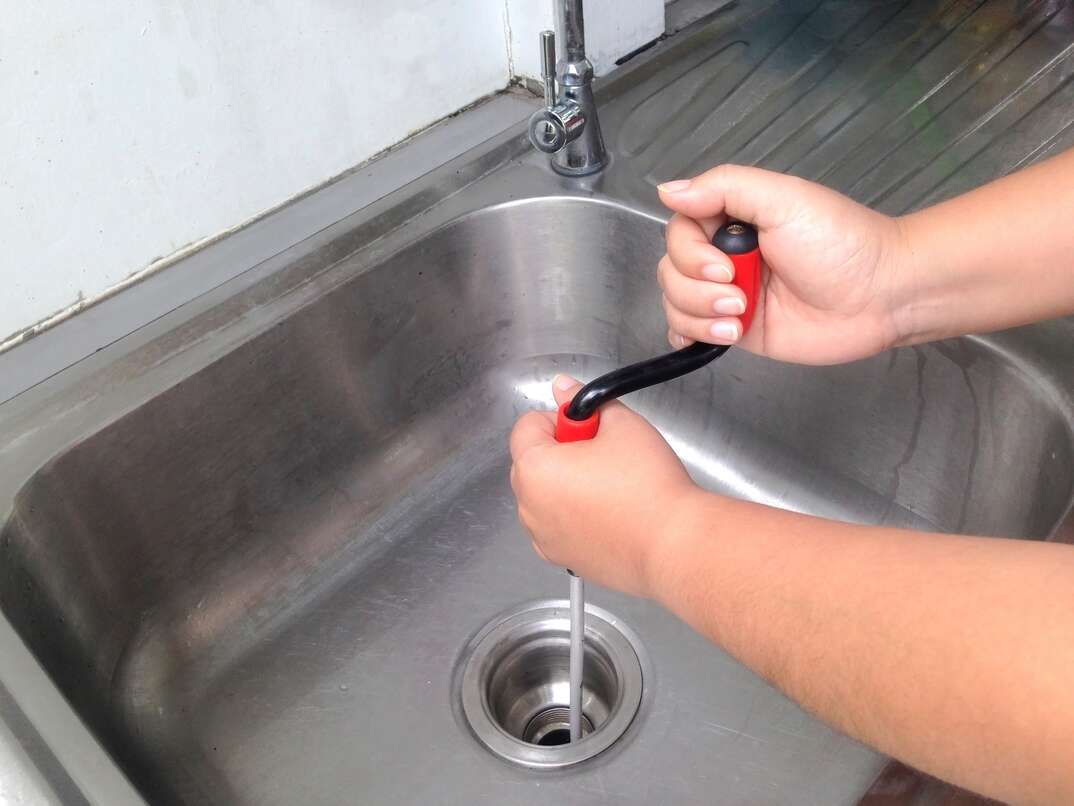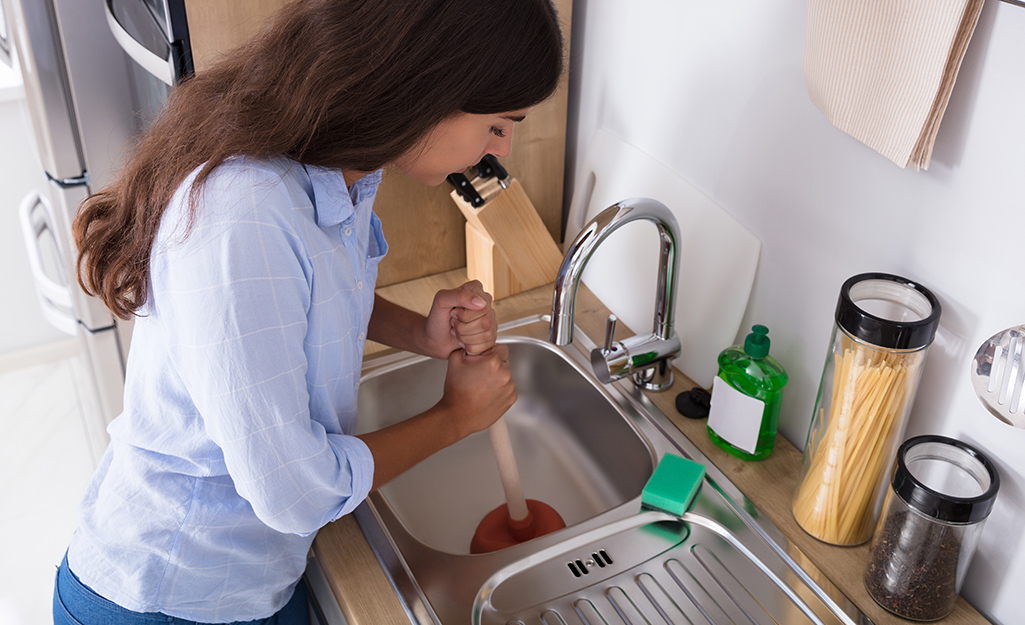Methods To Quickly Address A Slow-Draining Sink
Methods To Quickly Address A Slow-Draining Sink
Blog Article
We've come across this article involving 7 Ways To Fix A Slow-Draining Sink Before You Call A Plumber directly below on the internet and felt it made good sense to quickly share it with you over here.

Introduction
We've all been there: You're cleaning your teeth or cleaning your hands, and you discover the water merging in the sink. Rather than rapidly swirling down the drain, it lingers, transforming your once-refreshing early morning routine right into a small overload scene. A slow-draining sink isn't simply aggravating; it's often an indicator of larger plumbing issues prowling underneath the surface. The good news is that most slow-draining sinks can be repaired with a little expertise, a few basic tools, and some persistence. Prepared to tackle this project head-on? Allow's roll up our sleeves and dive right in.
Recognizing the Reasons For a Slow-Draining Sink
Prior to you begin poking around in your pipelines, it helps to understand what could be creating the slowdown. Comprehending the root cause makes it less complicated to choose the appropriate fix.
Usual Culprits Behind Slow Drain
So, what's obstructing points up? Typically, it's a mixture of day-to-day particles-- believe hair, soap residue, tooth paste residue, and leftover food bits. In time, these little bits gather and hold on to the pipe wall surfaces, gradually tightening the passage and making it harder for water to pass through. In many cases, mineral deposits from tough water can likewise add to the crud, producing the best storm for persistent obstructions.
When is it Time to Do Something About It?
If you observe the water draining pipes slower than common, it's an excellent concept to step in quicker as opposed to later on. Waiting as well long could bring about complete obstructions, unpleasant odors, or even pipeline damage. If the water takes greater than a few seconds to remove after shutting off the tap, consider it a warning and prepare yourself to place on your do it yourself hat.
Tools and Materials You'll Require
The right tools make all the distinction. Luckily, you will not require a fully equipped plumber's van to finish the job.
Essential Tools for Do It Yourself Services
A plunger is your go-to beginning point. A little, sink-sized plunger develops suction that can dislodge small obstructions. For more consistent blockages, a drain serpent (occasionally called a plumbing professional's auger) functions marvels. A pair of gloves, a flashlight, and possibly a set of protective safety glasses are likewise useful.
Recommended Cleansing Solutions
Light meal soap and hot water can aid break down oily accumulation. A mixture of baking soft drink and vinegar is a time-tested home remedy, and enzymatic cleansers provide a more environment-friendly approach. Keep chemical drainpipe cleaners as a last option, as they can be rough on your pipes.
Safety And Security First: Precautions and Prep work
Prior to you launch into unclogging setting, think of safety. You're dealing with possibly unclean water and particles, so slip on a pair of gloves. If you're making use of chemical cleaners, make certain the area is well-ventilated and follow the guidelines on the tag.
Protective Gear and Office Arrangement
Put down some old towels or rags around the sink location to capture sprinkles. Remove any type of products that could enter your means, like soap dispensers or tooth brush owners. See to it you have excellent illumination-- get hold of a flashlight if needed.
Step-by-Step Overview to Taking Care Of a Slow-Draining Sink
Now, let's get involved in the nitty-gritty. This step-by-step process will assist you with basic techniques to recover your sink's drain.
Step 1: Eliminate and Tidy the Stopper
Often, the stopper (that little plug you push down to obstruct water) is the initial offender. Remove it very carefully and wipe any type of hair or crud caught around its base. Rinse it completely before placing it back in place.
Action 2: Make Use Of a Plunger to Dislodge Particles
Got that bettor prepared? Position it over the drainpipe and give it a few company pumps. The idea is to develop suction that can loosen any kind of blockage. If you see little bits of debris drifting up, you get on the best track.
Step 3: Attempt a Drain Snake or Cable Hanger
If the plunger doesn't work, it's time to highlight the drain snake. Gently feed it right into the drain and twist as you go. You might really feel some resistance-- that's most likely the blockage. Maintain turning and pulling up until you eliminate the blockage. If you do not have a drain snake, an aligned cable wall mount can operate in a pinch.
Step 4: Apply a DIY Drainpipe Cleanser
An all-natural cleaner made from cooking soft drink and vinegar can break down recurring grime. Pour half a cup of cooking soft drink into the drainpipe, complied with by half a cup of vinegar. Let it fizz for around 15 minutes, then flush with warm water. This chain reaction often does wonders for small obstructions.
Step 5: Reconstruct and Check the Sink
Placed every little thing back together and run the tap. Does the water currently swirl down the drain at a reputable speed? If yes, provide yourself a pat on the back. If not, don't despair-- there are still a few even more dress up your sleeve.
Different Techniques for Stubborn Clogs
Not all blockages are produced equivalent. If your sink still rejects to comply, consider these different services.
Sodium Bicarbonate and Vinegar Technique
We currently touched on this, however it deserves noting once again. This mild, environment-friendly approach is more secure than chemical cleaners and usually quite effective.
Chemical Drainpipe Cleansers
Enzyme-based cleansers use natural bacteria to absorb raw material. They're an outstanding selection if you're seeking to stay clear of severe chemicals. Just bear in mind, they may take a bit longer to function their magic.
Chemical Drain Cleaning Company: Advantages And Disadvantages
Chemical cleansers can blow up through tough clogs quick, yet they're not without drawbacks. They can produce warmth and fumes, damage pipes if utilized excessively, and present ecological risks. Use them sparingly, and always follow the directions meticulously.
Safety Nets to Maintain Your Sink Flowing
Prevention is the most effective remedy. By taking on a couple of easy habits, you can keep your sink from reducing in the first place.
Normal Cleaning Up Behaviors
Clean down the sink container and component area regularly. Get rid of hair or food bits before they have a chance to wash down the drain.
Avoiding Dangerous Materials Down the Drain
Reconsider prior to discarding coffee grounds, oil, or fibrous veggie scraps down the sink. These wrongdoers hold on to pipeline walls, developing blockages over time.
Routine Maintenance Checks
Schedule a fast month-to-month assessment. Run hot water through the sink for a few minutes, paying attention to the flow. If it appears slow, act quickly before it ends up being a full-blown blockage.
When to Call an Expert Plumber
In some cases, regardless of exactly how tough you try, that obstruct just won't budge. That's when it's time to bring in the pros.
Signs That Suggest a More Serious Problem
If your sink drains slowly despite multiple attempts, or if you notice water backing up in other fixtures (like your shower or toilet), you might have an extra serious plumbing issue lurking deeper in the system.
Balancing Do It Yourself Efforts with Expert Aid
While DIY can save you cash and provide a sense of achievement, there's no embarassment in calling a professional. An expert plumbing professional can evaluate your entire pipes arrangement, making certain there's no underlying damages or long-lasting problem that can cost you extra later on.
Contrasting Expenses and Long-Term Solutions
Before choosing, take into consideration the big picture. An economical, quick fix could fix the trouble briefly, yet investing in a more permanent service might save you money and stress and anxiety in the long run.
Weighing the Expenditures of DIY vs. Professional Fixes
DIY solutions usually set you back little greater than the cost of a plunger or a container of cooking soda. Specialist solutions, on the other hand, featured a cost but might protect against repetitive problems and expensive repair services later on.
Buying Quality Fixtures and Upgrades
If your sink's design contributes to constant blockages, it could be worth updating to higher-quality fixtures or modifying the plumbing format. Consider this an investment in your house's performance and convenience.
Verdict
A slow-draining sink can seem like a small inflammation, but it's frequently an indicator that your plumbing requires a little TLC. By comprehending the origin, utilizing the right tools and techniques, and devoting to basic safety nets, you can keep your sink streaming openly. And when all else fails, never ever be reluctant to employ a specialist-- your home's pipes is worth the investment in treatment and maintenance.
Three Common Ways to Fix a Slow Drain
Baking Soda Method
Boil a full pot of water. Measure out cup of baking soda and pour it down the drain. Then take cup of the magical cleansing substance known as white vinegar and drop that down there too. Allow the mixture to fizz in the drain for five minutes as the vinegar and baking soda combine. Now dump in that whole pot of boiling water. This combination of cleaning substances should clear out anything that is causing your sink to drain slowly. If it doesn t...
Zip-It
If the baking soda method doesn t clear out your drain, it may be because a significant amount of hair and/or other debris has collected there and you need to remove it. Purchase a Zip-It tool at any home improvement or hardware store and insert it into your drain. It will catch any collected hair or debris that s blocking the flow of water. Pull it out. If it s got a big clump of hair, etc. on the end, you ve probably got your culprit.
Drain Cleaner
If these methods don t work, there is the standard drain cleaner that you can also buy in a hardware store or even your local grocery store. It s better if you can use a household solution, but these drain cleaners often work in a pinch. They re very simple to use. You generally just dump them in your drain and wait. If even this method is not effective, it may be time to call the plumber.
https://www.mrrooter.com/oneida/about-us/blog/2017/july/three-common-ways-to-fix-a-slow-drain/

We were introduced to that write-up on Solved! How to Fix a Slow Sink Drain from a buddy on our other domain. Are you aware of another individual who is intrigued by 4 Tips to Fix a Slow Draining Sink? Do not hesitate to share it. We thank you for reading our article about 7 Ways To Fix A Slow-Draining Sink Before You Call A Plumber.
Visit Page Report this page